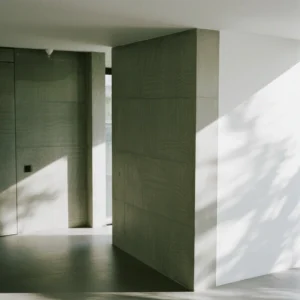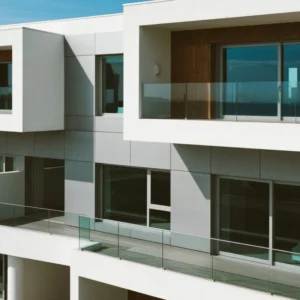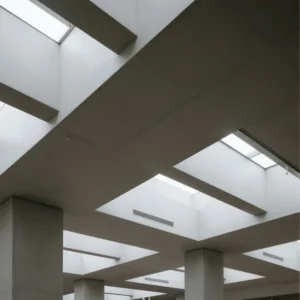Cement fiber boards excel in interior partition and ceiling applications, offering a blend of aesthetics and functionality.
For interior partition systems, 20mm fiber cement boards are increasingly popular. Used with a single layer of 100mm thick keels and applied on both sides, they outperform traditional aerated block walls in firmness, strength, sound insulation, and fire resistance. The construction is fast, dry, and prefabricated, shortening the construction period. These boards are eco-friendly, free of toxic substances and formaldehyde, and classified as Class A non-combustible materials. They are waterproof, insect-proof, and have excellent surface flatness, allowing direct decoration like putty, painting, wallpapering, PVC film, or wood veneer application without additional plastering.
In ceiling systems, fiber cement boards, reinforced with tough fibers, are more eco-friendly, fire-resistant, insulating, cost-effective, and aesthetically pleasing than regular cement boards. They are less prone to deformation or warping, and when combined with keels, reduce construction costs and improve work efficiency. Some internal systems with steel frames offer excellent acoustic performance, achieving up to 57 STC rating by using different thicknesses of wallboards and acoustic materials in wall cavities. These boards also have better hardness and flexibility, withstanding greater impact without damage.
They are widely used in medical environments, serving as baseboards for cleanrooms in operating rooms, hospitals, or laboratories. Suitable for ceilings and partitions in dry industrial and residential buildings, as well as in humid areas like bathrooms, certain variants have excellent moisture and mold resistance, maintaining stability in damp conditions and preventing deformation, discoloration, or mold growth. Perforated boards in such areas aid ventilation, keeping spaces dry and odor-free.
Sustainability is a key advantage. Made from materials like cement, sand, and cellulose fibers, they are non-toxic and durable, meeting green building standards. The market is projected to grow strongly, with a notable compound annual growth rate in the specified period. Innovations include products designed specifically for ceilings and partitions, offering higher strength and better aesthetics for various commercial and residential projects.




